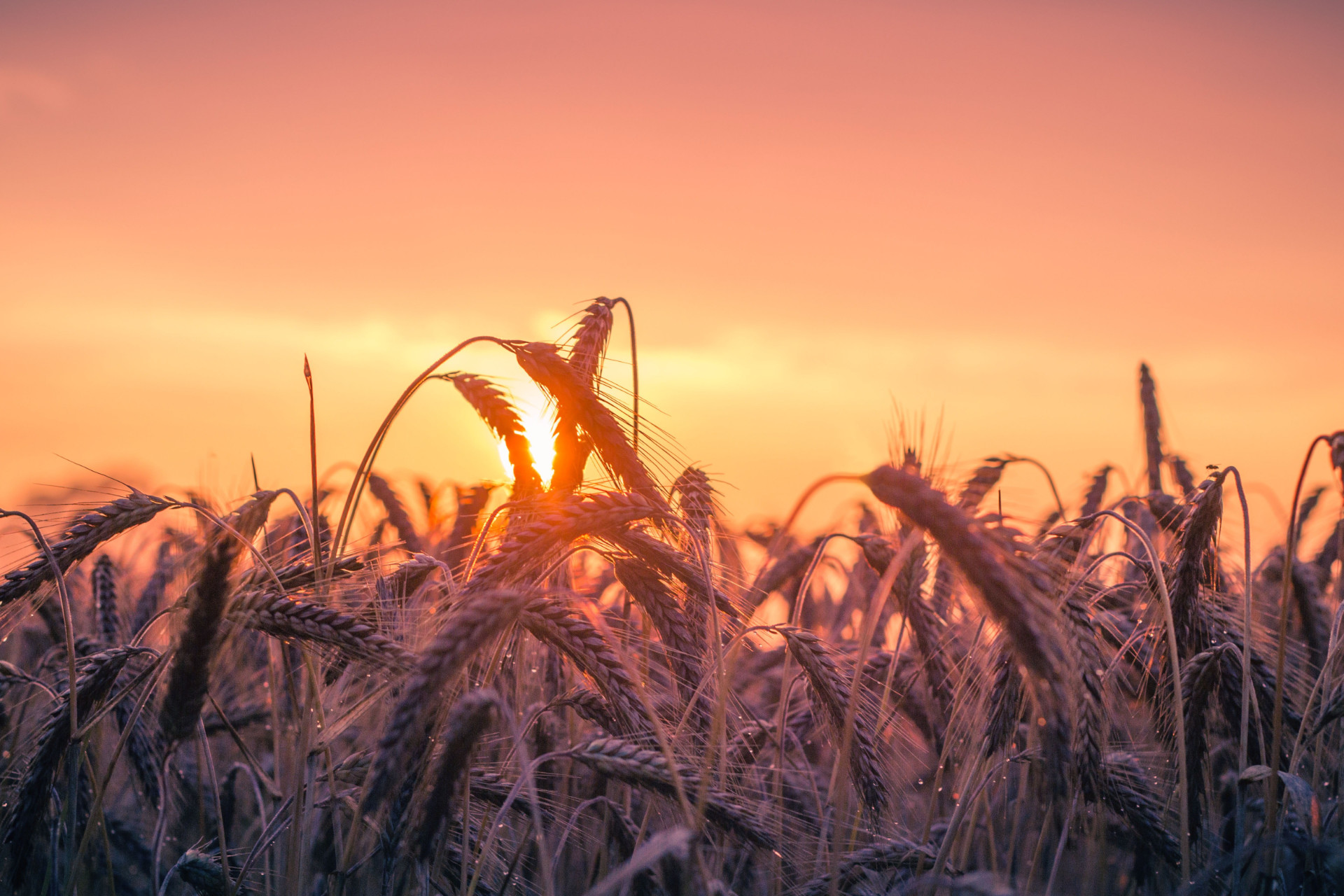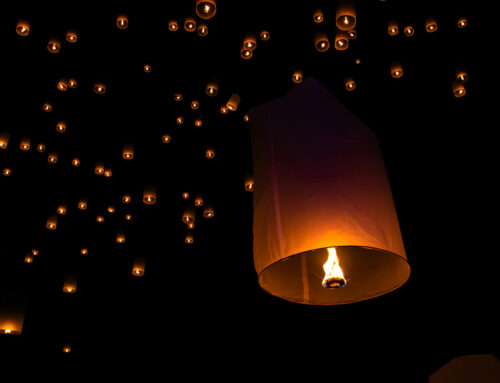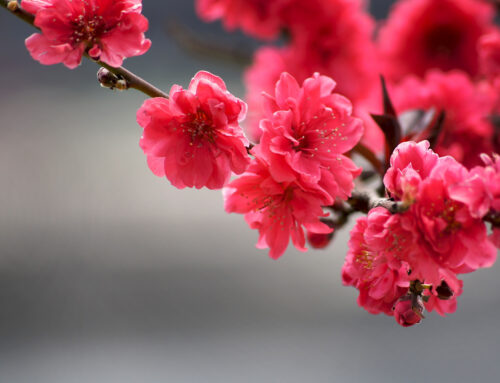Lughnasadh (spoken Lu – nah – sa) is one of the eight festivals in the Wheel of the Year, which in its entirety represents the cycle of life. In this cycle of becoming and unbecoming, death and rebirth, Lughnasadh is the first of three harvest festivals and marks a time of maturation.
Another name of this festival is Lammas, from Christian “loaf-mass”, because the grain harvest begins at this time and people would use the grain to bake the first loaf of fresh bread.
When do we celebrate Lughnasadh?
As Lughnasadh is one of the lunar festivals in the Wheel of the Year, the celebrations used to be based on the 8th Full Moon of the year (usually in August). People would typically come together during the waxing moon phase, shortly before Full Moon, because her fullness invites us into gratitude and harvest.
Today, we use a solar calendar, so Lughnasadh is often celebrated on August 1st in the Northern Hemisphere, which lies exactly in between Summer Solstice (usually June 21st) and the Autumn Equinox (usually September 21st). In the Southern Hemisphere, it takes place on February 1st.
Why do we celebrate Lughnasadh?
Lughnasadh has many names, also Lammas (from “loaf-mass”), the feast of the reaper-goddess, grain feast, Thanksgiving or Assumption of Mary. This already hints at the different themes present at this time of year: no matter whether the celebrants are Christians or simply want to express their earth-based spirituality, it’s all about gratitude for the gifts of Mother Nature and the “sacrifice” (or offering) of the first harvest.
People would thank the god Lugh, the god of the sun and the crafts from the ancient Irish culture. The light of the sun begins to wane outside (you can definitely notice that the days are getting shorter now), the Sun god Lugh is ageing and prepares himself to die (but don’t worry, he’s going to be reborn at Winter Solstice on December 21st ;-)).
In this, he symbolises the cycle of life and death and rebirth, because the harvest is a kind of death, where trees and fields offer their fruit to nourish us. Lugh, or simply Nature, sacrifices himself, so that we can live.
[How much different would the world be, if we still remembered this before every meal? How would we treat our food, which is so abundant in our Western countries? How might we even change the way we eat and go grocery shopping?]
What is the energetic quality of this time?
Lughnasadh marks the beginning of harvest time, especially of grain, hay, ripe fruit and herbs. It’s about processing these gifts of Nature and beginning to build supplies for the dark half of the year.
But the weather can be very harsh: The sun is still strong enough to make the plants wither, yet it can get very cold at night. Hail, storms and rain can destroy the harvest, so there’s still protection needed, as much as an inner blessing and prayer for a good harvest, often in the form of little offerings to Nature.
When is the right time for harvesting? Have the fruits ripened enough? Or will they be destroyed by sun or thunderstorms, if we leave them on the fields to ripen some more?
You can also relate these questions back to your life:
Is what you’ve sown and tended to this year ripe already? Have you poured your love and energy into it or forgotten to take care of the seeds? Where do you maybe even need to make a clear cut right now?
How can you honour the quality of this time?
You can honour this time in your day-to-day life with little rituals or special moments:
- Small Offerings: People would often leave a little offering to Nature on the fields or in the gardens, like the most beautiful sheaf of grain or the biggest apple on the tree. Maybe you’d like to create a little doll out of straw, place a bowl of red wine or some bread on your personal altar or in a place of special power. This shows your gratitude for receiving the abundance of Nature.
- Enjoying Nature: Wander through nature, over the fields, through the gardens, enjoy the plentiful colours around you, the fragrances that surround you, the tastes on your tongue.
- Clarifying or ending something: The festival of the reaper-goddess also symbolises a severing of what doesn’t serve you. Use the energetic quality of this time to clarify a situation or to end something, to confidently say No to what you no longer want.
- Reflection: What has matured in your life and is now ripe for harvest? What do you need do symbolically prune or cut? What didn’t mature, maybe, and needs to be let go now? What do you need for further harvest? And most importantly: Celebrate what’s already here, in your life. Accept your harvest and find your own way of expressing gratitude.
The meaning and themes of Lughnasadh
Lughnasadh is a time of abundance and harvest, of appreciation of Nature, but also of boundaries and separation.
Enjoying Abundance and Sharing Gifts
The grains are ripening on the fields, the trees are full of colourful fruits, on our walks we’re infatuated with the fragrances of herbs – Nature is showing her gifts and what she has to offer.
So it’s important to be mindful of this abundance and show our appreciation. This is a time to rejoice in the richness we see around us, and we can share it with others.
And don’t forget your own inner riches! You are a unique and extraordinary human being, with your own individual set of strengths and talents and you are allowed to be proud of yourself and show them to the world!
Harvest and Transformation
Lughnasadh is the first of three harvest festivals and makes us aware that death is part of the cycle of life. Something goes away, so that something else can emerge. Nature sacrifices her children, her fruit, so that we can live and survive winter.
Well, in turn we provide fertiliser that allows new fruit to grow next spring ;-)
Life is constantly changing and we’re part of this cycle of life, death and rebirth. And it’s easier to accept when we recognise the necessity of death in this cycle, and appreciate it.
Boundaries and Separation
Lughnasadh is the festival of the reaper-goddess, who both harvests the first grain on the fields AND helps us separate from what’s no longer supportive and nourishing in our life.
It’s about looking at the different areas of our life (e.g., intimate relationships, family, friendships, work and finances, health etc.) and evaluating whether or not we want them to continue as they are right now – and about making the necessary decisions. To cut the threads that we no longer want to continue spinning.
Lughnasadh in the Cycle of Life
The wisdom of the individual festivals of the Wheel of the Year can always be applied to our bigger cycles of life, which we move through as humans – no wonder, since they represent the Cycle of Life.
Lughnasadh shows us a process of change and transformation: The grain needs to go, so that we can live. Death will always be part of life, but we can bless and thank what’s dying, and thus express our deepest appreciation of this sacrifice.
In our human life, the time of Lughnasadh reflects an age of approximately 50 years and usually heralds a time of maturation. We know who we are, our capabilities and strengths and dare to show them to the outside world. And we know what we DON’T want. What we’re up for and what we aren’t. So we exude this natural air of authority and competence.
In the life cycle of a woman, this is the time where she begins to share the knowledge from her life experience with the community. Now that she isn’t occupied with finding out who she is (childhood/teenage years) or busy caring for others or a job (motherhood/parenthood) anymore, she can focus on passing her wisdom on to the next generation – and thus contributes to the nurturing of her community.
How can you celebrate Lughnasadh?
In line with the themes of Lughnasadh, the corresponding rituals are all about harvesting, gratitude and decisions.
Personal Rituals
- Separating the Wheat from the Chaff – Making Decisions: Take a moment and make yourself really comfortable. Light a candle, to symbolise the power of the sun, who brings us light and life. Then reflect on the following questions:
1: What would I like to harvest in the different areas of my life (e.g., intimate relationships, family, friendships, work & finances, body & health, spirituality etc.) – and what is unnecessary weight that’s holding me back rather than moving me forward?
2: What has now ripened in my life, and which things can I let go of that haven’t ripened? Which threads can be cut, what needs to be separated or trimmed?
3: What can I “sacrifice”/offer as expression of my gratitude to the helpful Spirits of Nature, who have been with me on this journey through the year?
Here are two ideas how to perform the ritual:
> Draw a circle on the floor (e.g., outside in Nature) and sit down inside of it. Then think about and decide what comes into the circle with you and what needs to stay outside (or what you want to throw out ;-)).
As an alternative, you can draw a circle on a sheet of paper and write what you harvest inside and what you want to let go of outside of the circle
> Take a piece of paper and write down what you want to let go of. Burn it and thank the Universe for your harvest. - Concentrating on the Essential: Take a moment and think about what’s truly, truly important for you in your life. The essence, so to speak. Then think about which decisions need to be made, so that the essential has time to mature.
- Herb Blessing: Go outside and collect aromatic herbs and healing plants. Before you pluck them, pause for a moment and ask them for permission. This is how you show your appreciation. Back home, you can tie them into little bunches, hang them up in the house and use their power over the dark half of the year. You can use them for smudging, for example, or to cook. Right now is a good time to look for St. John’s wort, mug wort, wormwood, yarrow, valerian, chamomile and thyme.
Group Rituals
- Gratitude in the Group: Meet somewhere in nature to collect herbs together, pluck berries or apples. As a sign of appreciation and respect, you can ask the plant for their permission beforehand. Then you get back together and lay the gifts into a circle. Hold your hands and say a few words of gratitude one after the other – gratitude for the abundance of Nature, but also for what you have in your life.
- Harvest Feast: Get together to process the gifts of Mother Nature as a group activity. You can make preserved fruits (that you have gathered beforehand), tie bunches of herbs or bake bread together. Celebrate, break the bread together and share a little bit of it with Nature.

Do you have any questions or know other Imbolc rituals that you love celebrating?
Send me a message, I‘d love to learn more!






